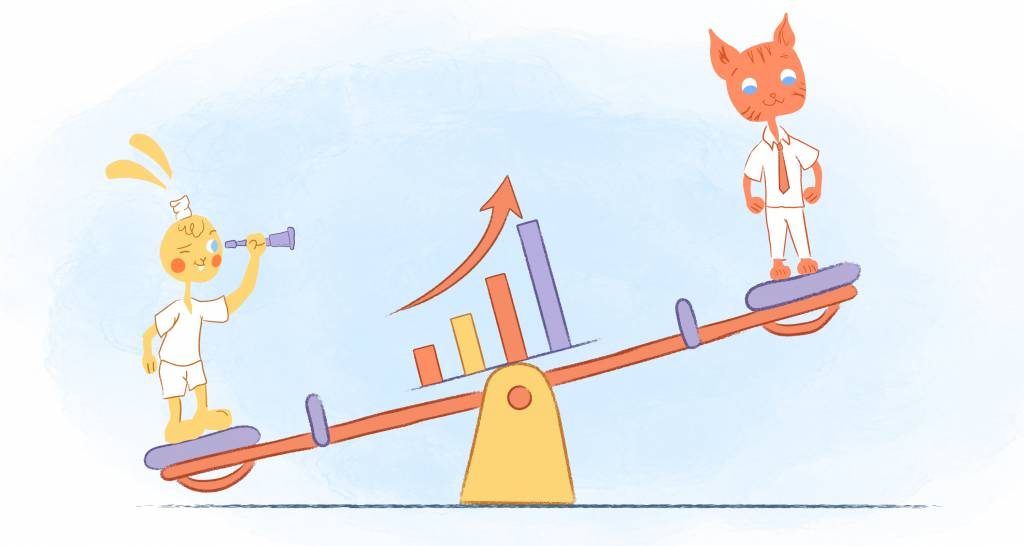

Historically, the modern calendar dates back to at least 1582. Ever since then, people have devised a number of clever ways to plan their schedules and keep track of appointments and events.
However, compared to the original paper calendars, today’s digital calendars are much more flexible. For example, reminders can be sent directly to our smartphones so we can keep track of our appointments and plan an efficient daily schedule. And, by using a shareable digital calendar, businesses can foster teamwork and achieve shared goals.
Here’s a look at what a business calendar is, why it’s important, and the must-have features it should have.
What is a Business Calendar?
We all know what a calendar is. In fact, I’m sure you have at least three of them around your right now. It’s probably on your wall, your home screen, and in your inbox.
But what is the difference between a personal calendar and a business calendar?
As the name implies, a business calendar is used for business. The difference doesn’t end there, though.
Since business calendars serve a different purpose, their functions and features differ. Business calendars, for example, are typically cloud-based digital calendars that enable task management, sharing, and automated notifications.
Suppose you had a wall calendar in your office where you could keep track of your business meetings and deadlines. The result would be disastrous. This is why business calendars are flexible digital tools that let us track multiple events simultaneously and set quick reminders for meetings.
In addition to storing endless information you couldn’t fit on paper, they typically offer a massive amount of scheduling and customization options, as well as separate events and reminders by the team. As such, you can see everything you need to know at a glance.
Simply put, a business calendar is a system for organizing meetings and communicating with your team.
Why a Calendar is Important for Your Business
Increases productivity and communication at work.
Your calendar should be shared with your team because it simplifies the planning process and makes scheduling sessions easier — even when you are away.
For example, if you neglect a duty you’ve made to a customer, it’s not just inconvenient. Your company might also suffer. In addition, who wants to work for a company that cancels meetings or fails to meet deadlines?
By sharing a calendar, everyone is on the same page when it comes to scheduling meetings and allocating responsibilities. Even better, changes to the calendar are instantly updated. As a result, there can be no miscommunications or back-and-forths.
Overall, a company-shared calendar makes it easy for managers and colleagues to keep an eye on meetings, assignments, events, and business lunches/dinners.
Simplifies recurring events.
“When you have meetings that repeat themselves, it can get messy,” writes Max Palmer in a previous Calendar article. “With calendar software, you can set up a recurring appointment with ease.”
The monthly updates will no longer be discussed at the last minute with the team. The calendar will automatically fill in the remaining days, weeks, or months following a repeating appointment.
Keep up to date with any significant events.
Using a shared calendar allows you to plan ahead and attend events in advance, offering your company the opportunity to meet new people. Furthermore, a calendar will remind you to follow up on your initial interactions.
Additionally, a shared calendar is essential for trade shows and networking events. In fact, each sector hosts many shows and exhibitions every year, and there are thousands of trade fairs every year. A calendar can help you can test the waters by attending one first. And if you love it, you can plan to attend the event annually.
Stay on top of important dates.
The ability to attend events is crucial, and it may be a faster way of getting customers. But social media, internet content like blogs, and public relations should also be part of your marketing strategy.
All of these things can be scheduled through a shared calendar. For instance, when essential news for your industry is revealed, you can prepare a comment or respond promptly. Suffice it to say, this has a huge impact on public relations. You may wind up representing the industry if a reporter sees your comment first when breaking news breaks.
Moreover, a business calendar can provide a roadmap for your content over the coming weeks, months, and even years. How? It can be used to organize ideas, schedule content consistently, and track its performance.
Using it saves time and increases creativity.
Organizing group meetings with your busy team takes time and is a challenge. The same is also true when scheduling them. However, using public calendars saves you time searching for the best day and time between them. And, it ensures that you are never under-or-overbooked,
In short, by using a business calendar, you are like having a personal assistant who manages your company’s entire schedule.
Moreover, since it takes approximately 16 minutes to switch your focus back to your other task after checking email, shared calendars can boost your productivity.
You can balance out tasks with it.
You can also balance out tasks among your team members with a company-shared calendar. To have a better understanding of each employee’s availability and commitments, you may check the team calendar. As a result, they are able to schedule their tasks, projects, and appointments more efficiently.
It is even possible to review previous team calendars so you can see what your colleagues were doing, who they met with, and what assignments they completed. It is also possible to plan future initiatives using such data.
Organizes business finances.
“Getting and staying organized for the long haul requires developing protocols and processes that close (or bridge) time management and financial management gaps,” notes Abby Miller in another Calendar piece.
“If your struggle with self-organization is an everyday occurrence, try these steps,” adds Abby. “First, they’ll help reinforce weak spots with strong, proven practices.” You’ll notice an increase in performance and efficiency within a few weeks of making consistent changes.
- Ensures that you pay your bills on time in order to improve your credit score.
- Helps you explore ways to get paid faster, such as bumping up your invoice due dates.
- By consolidating calendars, you can keep your professional and personal lives organized and conflict-free.
- Lets you take note of organizational problems so that you can improve them. As an example, if a project exceeds its deadline, reviewing status updates may help you uncover what caused its delay.
Contributes to company awards.
You deserve recognition for your efforts since working can be challenging and draining at times. You might consider entering essential industry awards if your company-shared calendar allows you to do so.
As a result of the awards, your team members will be recognized for more than just their efforts. Depending on the circumstances, you might also want to share this information on your social channels, company newsletter, or even issue a press release.
It simplifies everything.
It is quite common for meetings to go awry. Excel spreadsheets, for example, can easily be messed up by clicking the wrong box when you use them as calendars. You may also forget to plan if you handle everything by email. In the event that employees are allowed to send you the information whenever they desire, there are a great number of duplicate reservations.
With an online business calendar like Cron Calendar, these hiccups and conflicts are completely preventable.
For new companies, sharing a calendar is ideal.
The long hours and stressful schedules that come with launching a company are well-known to anyone who has done so. Not to mention staff meetings and industry events that are part of the startup culture.
Therefore, it’s not surprising that companies use public calendars to stay organized and active throughout their long workdays. It has even been deemed the ideal workplace culture by some companies.
Creates time for relaxation and team-building.
While office time should be spent wisely, having fun shouldn’t be excluded. In fact, workplace culture cannot be unified without having fun together.
Due to the constant flow of work, it’s hard to schedule time for team building if it isn’t scheduled in advance. It is essential for schedulers to view everyone else’s availability because most businesses qualify as large groups. And having one team calendar can see everyone’s availability from one location.
What Features Should You Look for in a Business Calendar?
In order to increase team efficiency, a business calendar should possess these five features.
For team productivity, it should be sharable.
Your team will be able to focus on upcoming events and deadlines when you share your business calendar with them. Additionally, managers who fail to define the overall direction of the team create a significant barrier to team success when working toward shared goals.
Shareable business calendars help teams coordinate and stay on top of work items and deadlines by displaying all of them at once.
Schedule appointments.
Scheduling upcoming appointments is a fundamental function of any business calendar. After all, a business calendar shows you when you are available or not, whether you’re meeting with a team or meeting with a client.
By creating customized meeting and event templates within Calendar, for example, you can create scheduling events for meetings and events. In addition, you’ll be able to select which scheduling events are available to be booked by others. It is then just a matter of choosing a scheduling events on your calendar whenever someone wants to meet with you.
The “share your custom link” feature in Calendar makes sending meeting invites a breeze. You only need to send a custom link to schedule a meeting.
If you’re interested in seeing where your time was spent, use Calendar Analytics. It’s also equipped with features like a team calendar, a unified online calendar, and a great user interface.
Balance out work.
By using a business calendar, you can distribute your workload evenly among your team members. The use of color codes helps organize the work of all your teams.
To see an individual’s upcoming appointments and deadlines at a glance, you can assign them a color code.
It is also possible to color-code work ownership among members of your team and subgroups. So, instead of reading a page in black-and-white, color coding helps people quickly navigate information visually.
Also, when you use a color contrast scheme, your team will be more efficient. As a result, you get a comprehensive overview of everything that needs to be done by you and your team.
Show reminders.
When an appointment or deadline is approaching, digital calendar solutions can remind users. Unlike paper calendars, which required periodic inspection to know what you had scheduled for upcoming dates. As a result, people were likely to miss or forget appointments if they neglected to check regularly.
To remind us of upcoming events and deadlines, digital calendars now beep and buzz. In addition, you can check your daily schedule on your phone widget or smartwatch.
Setting team deadlines and appointments on a shared calendar can help everyone stay organized.
In short, a business calendar should send reminders before events like meetings, as well as due dates for tasks.
Be mobile.
Unfortunately, work does not stop when the office closes. There is an increasing expectation that we will be available outside of work hours. And, as remote and hybrid working arrangements become more common, expect this trend to continue.
Also there are some, however, who work primarily on the road. So, a business calendar isn’t effective unless it’s mobile-friendly. There must be a mobile app for Android and iOS for any calendar solution a business owner chooses.
Thankfully, most digital business calendars have mobile versions, and Calendar is no exception. In addition to the web, Calendar is also available on the App Store and Google Play.
Image Credit: Photo by Pavel Danilyuk; Pexels; Thank you!











John Rampton
John’s goal in life is to make people’s lives much more productive. Upping productivity allows us to spend more time doing the things we enjoy most. John was recently recognized by Entrepreneur Magazine as being one of the top marketers in the World. John is co-founder and CEO of Calendar.